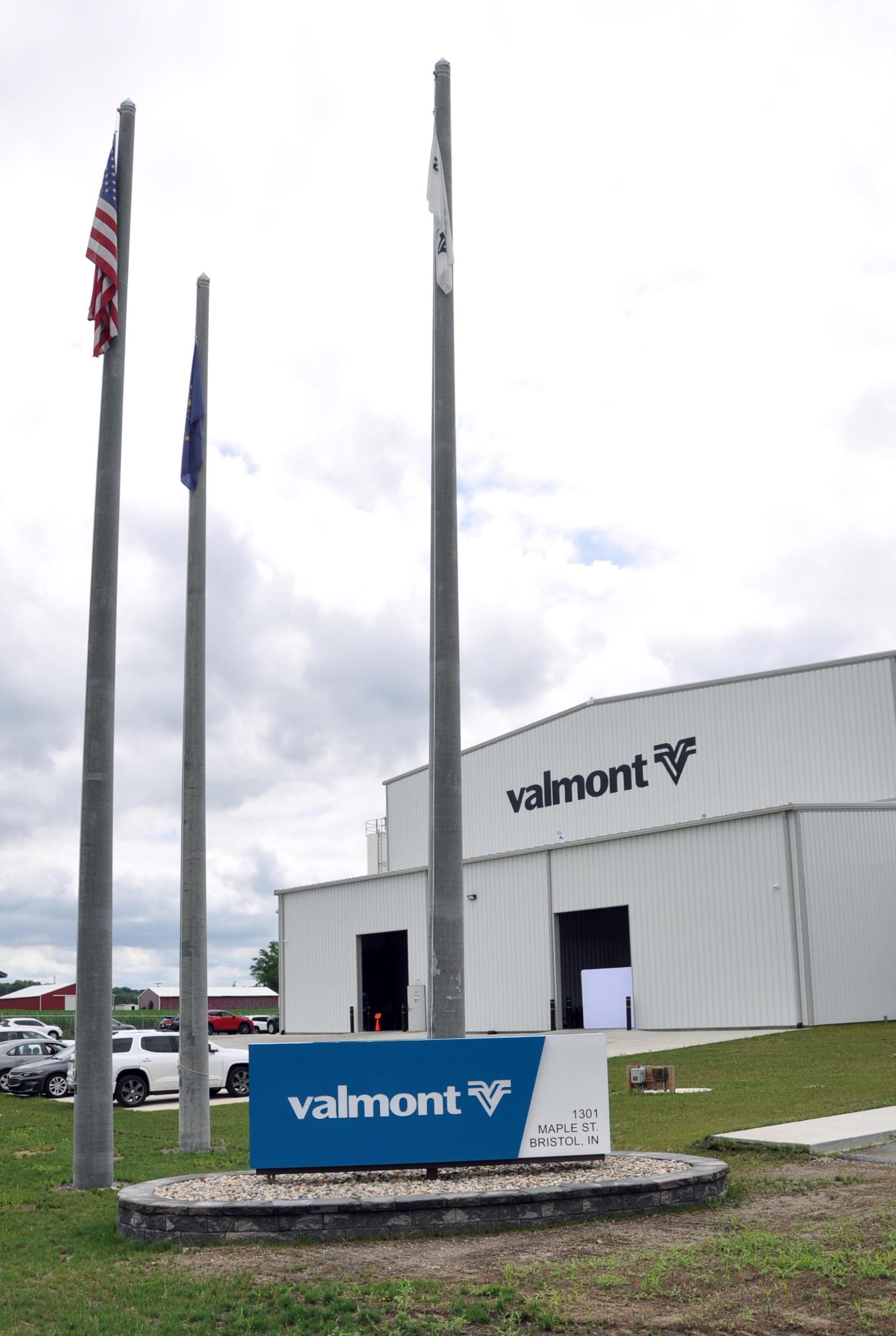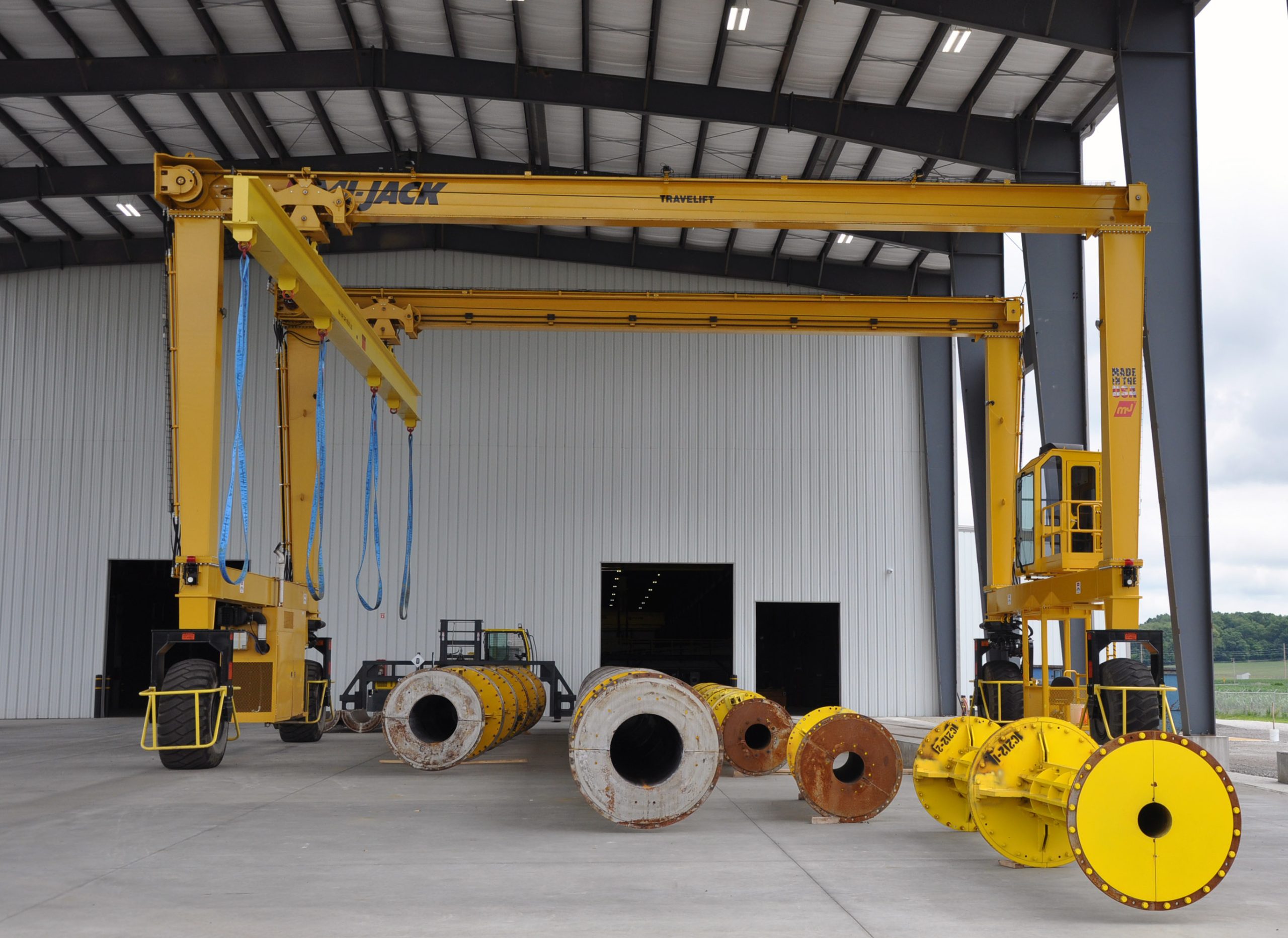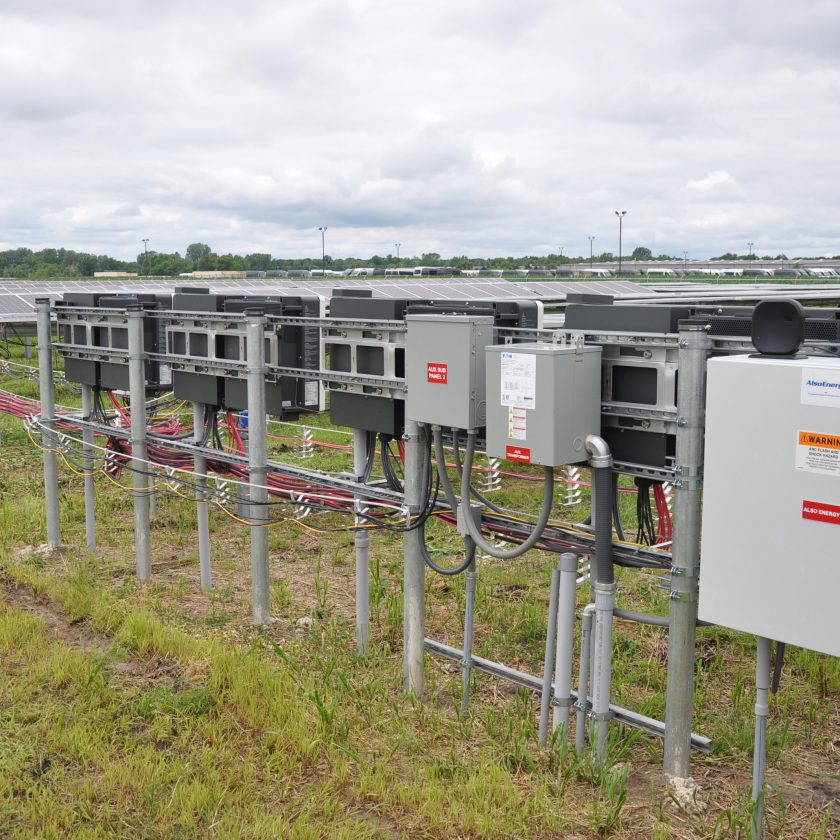
Where engineering efficiency and cement optimization go, spun prestressed power transmission and distribution (T&D) poles have few rivals in concrete production: The centrifugal forces that low-slump mixes encounter in hollow cylindrical molds, bearing on horizontal racks and spinning at up to 300 rpm, drive inordinate cement particle hydration and packing. Robust bonding of reinforcing cage and prestressing strand steel to dense walls of high compressive strength (> 10,000 psi) concrete follows.
One of 18 Infrastructure segment brands under Omaha, Neb.-based Valmont Industries Inc., Valmont Utility is unrivaled in North America for spun prestressed concrete pole production, with five plants booking 2023 shipments surpassing 200,000 tons. Less than 12 months out from its first delivered structure, the producer’s newest plant ranks among the top facilities of its kind globally. Early on, it exhibits all the makings of a case study in operational and environmental excellence.
Strong T&D market indicators underpinned by escalating electricity consumption enabled Valmont Utility to view an 80-acre, Bristol, Ind. greenfield with a blank sheet and budget north of $30 million. Management and engineers approached their northernmost operation with best practices and wish list items from nearly 20 years of running and expanding open air Alabama, Florida, Georgia and Texas sister sites. The result: A 110- x 710-ft. enclosure with a pair of twin 40-ton bridge cranes assuring rapid lateral or forward transfer of steel molds, reinforcement and customer-specific hardware, plus fresh or hardened concrete along eight steps: set-up, assembly, pouring, stressing, curing, demolding, finishing and shipping.

NORTHERN TREK
One Valmont Utility value proposition holds: “Water, salt, coastal air, fog, mist, erosion, high winds, hot or corrosive soils, swampy environments and fire are just a few of the conditions that wreak havoc on most transmission poles—but not spun concrete. It stands up to nearly any conditions—including cold weather.” The Bristol plant is the first U.S. plant of its kind built in a colder climate and, with close proximity to the Interstate 80/90 Indiana Turnpike, strategic to Northeast, Great Lakes and Midwest markets. Spun prestressed concrete T&D poles up to 130 feet long and 5-ft. base diameter typically ship as far as 500 miles. Certain contracts can warrant 135-ft. poles and trucking in the 800-mile or farther range.
“We are building poles daily at Bristol, steadily growing into the plant’s potential, and have several projects awarded for 2024-2025 delivery, adding to our enterprise backlog,” says Valmont Utility VP of Products & Operations Transformation Ronald Barnett, P.E., who is based in Bartow, Fla. at one of the producer’s largest spun prestressed concrete plants. “We have had a lot of existing customers and new prospects visit Bristol. They see the quality of our operation and processes, and cost effectiveness of spun prestressed concrete poles.”
Bristol production to date has included orders for Midwest installations of AEP, Duke Energy and NextEra—all operators that have worked with Valmont Utility engineers and production staff at sister Southeast or South Central plants. “These and other major customers have used spun concrete poles in Sun Belt markets for years,” Barnett observes. “Bristol gives them a premium pole option for new regions.”
Mid-States Construction Inc. of Elkhart, Ind. served as general contractor on the Bristol plant.
Valmont Utility worked with Germany’s B+S Engineering GmbH on mold inventory and spreader bar components for the Bristol operation. Two pairs of 40-ton bridge cranes, plus a 10-ton jib crane, handle iron and fresh or hardened concrete along more than 600 feet of fully enclosed production area at the new Indiana facility. Molds travel the length through preparation, reinforcing, pour, curing chamber and stripping stations. Cured poles are staged for inspection and finishing, then transferred laterally to a rail-mounted electric cart for picking by a gantry in the sheltered, open air bay (opposite page).
The Bristol plant is Valmont Utility’s first to deploy MBK automated cage fabrication machinery. Initial performance suggests the investment is adding up to a savings of three manhours per pole versus alternative manual methods. The Indiana plant is also the producer’s first to deploy a Combilift Combi-SL (Sideloader) forklift truck, whose four-way operating mode eases reinforcing bar and coil handling.


CARBON CONSIDERATIONS
Valmont Utility’s newest operation is the springboard for a Type I/II portland cement mix design migration to an interim blend of Type I/II and slag cement. The producer will move to slag cement plus portland-limestone cement, or Type IL, as primary supplier Buzzi Unicem USA transitions all mills’ output to Type IL. Over the next 12 months, a blended Type IL and slag cement specification will be adapted for mix designs at the Alabama, Georgia, Florida and Texas plants—spawning an “eco-concrete” label across Valmont Utility spun prestressed structures. When complete, the switch from legacy Type I/II binder could equate to an annual 12,000-ton carbon dioxide emissions avoidance.
A more tangible CO2 reduction exercise took place in mid-2023, as Valmont Infrastructure and Utility officials unveiled a solar panel array abutting Bristol plant storage yard acreage. Wired for direct power grid feed, the array has the potential to deliver 900-plus kilowatts of electricity a year, offsetting up to 100 percent of fossil fuel power that might otherwise run Bristol production line. The installation includes 70 single-axis, Convert trackers from Valmont Solar, a newer Infrastructure brand. Software enables the Convert assemblies to harness up to 25 percent more energy than fixed in-place racking by orienting the panels to optimum sun ray exposure throughout the day. Valmont Infrastructure teamed with Ameresco Inc., Framingham, Mass. renewable energy specialist, on construction of the $2.5-million Bristol array, whose output could spell an annual CO2 emissions reduction approaching 800 tons when measured against fossil fuel-powered electricity sources.
“The eco-concrete pole product and its onsite solar array showcase our focus on delivering disruptive technologies to lead and transform the industries we serve,” Valmont President TDS and Lighting & Transportation Chris Colwell noted during the Bristol dedication. “As part of the long-term need for critical infrastructure investment, we recognize the vital role transmission, distribution and substation structures will play in the energy transition super cycle as well as the importance of sustainability in our products, services and solutions. How we deliver is just as important as what we deliver.”
In investor guidance ahead of the Bristol array dedication, he framed the “energy transition super cycle” against a backdrop of Inflation Reduction Act, Infrastructure Investment and Jobs Act and Chips Act funds impacting programmed T&D upgrades, widely-acknowledged U.S. electric grid hardening priorities, plus new transmission lines needed to serve abundant wind and solar power infrastructure. Valmont’s message to the market and consumers: “Hardening the grid. Optimizing renewable energy … Technology can’t exist without resilient, reliable infrastructure.”


